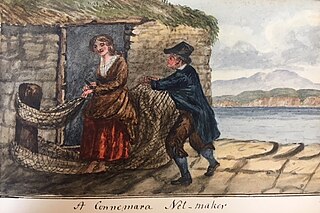

Daniel Cornelius de Beaufort (1700-1788) was rector of St Mary the Virgin church, East Barnet, London, and later Provost of Tuam and rector of Clonenagh in Ireland.


Daniel Cornelius de Beaufort (1700-1788) was rector of St Mary the Virgin church, East Barnet, London, and later Provost of Tuam and rector of Clonenagh in Ireland.
De Beaufort was born in Wessel, Westphalia in 1700. He was the seventh child of Count Francis de Beaufort, court chancellor to the Prince of Lippe-Detmold [1] and his wife, Louise Mary Brazy. The family were of Huguenot origin and were forced to flee France for the United Provinces after 1685. [2] His brother, Louis de Beaufort (1703–1795), was a scholar who was one of the first to raise doubts about the credibility of early Roman history.
De Beaufort was educated at the University of Utrecht and ordained as a priest. [1]
De Beaufort moved to England where he ministered to the French Huguenot community and was ordained into the Church of England. He was appointed to the living of St Martin Orgar in the City of London, where French Protestants then worshipped, and officiated at the Savoy Chapel. He became rector of St Mary the Virgin church, East Barnet, in 1739, which from 1741 he combined with his duties at the Little Savoy. [1] He left East Barnet in 1743 and was succeeded by Samuel Grove. [3]
De Beaufort married Esther Gougeon whose sister Denise was the mother of Sir William Neville Hart. They had a son Daniel Augustus Beaufort (1739–1821) who was a priest and distinguished cartographer. His son was Sir Francis Beaufort (1774-1857), [4] Royal Navy officer and hydrographer and the inventor of the Beaufort Scale for indicating wind force.
In 1746, de Beaufort accompanied the Earl of Harrington to Ireland as chaplain and in 1747 he received the benefice of Navan, Meath. In 1753 he was appointed to be Provost of Tuam and he later became rector of Clonenagh. [1]

Sir Francis Beaufort was an Irish hydrographer, the creator of the Beaufort cipher and the Beaufort scale, and a naval officer.

Adam de Brome was an almoner to King Edward II and founder of Oriel College in Oxford, England. De Brome was probably the son of Thomas de Brome, taking his name from Brome near Eye in Suffolk; an inquisition held after the death of Edmund, 2nd Earl of Cornwall, in 1300, noted de Brome holding an inheritance of half a knight's fee.
Louis de Beaufort was a French-Dutch historian best known for his critical approach to the history of Rome. His brother was Daniel Cornelius de Beaufort (1700-1788).
Richard Lovell Edgeworth was an Anglo-Irish politician, writer and inventor. He had 22 children.

Thomas Scott (1747–1821) was an influential English preacher and author. He is principally known for his widespread work A Commentary On The Whole Bible, for The Force of Truth, and as one of the founders of the Church Missionary Society.
Beaufort is the name of a noble family of 14th and 15th-century England, descended from John of Gaunt, 1st Duke of Lancaster. For a list of individual Beauforts, see House of Beaufort.

Greyfriars Kirkyard is the graveyard surrounding Greyfriars Kirk in Edinburgh, Scotland. It is located at the southern edge of the Old Town, adjacent to George Heriot's School. Burials have been taking place since the late 16th century, and a number of notable Edinburgh residents are interred at Greyfriars. The Kirkyard is operated by City of Edinburgh Council in liaison with a charitable trust, which is linked to but separate from the church. The Kirkyard and its monuments are protected as a category A listed building.
Benjamin John Plunket was a 20th-century Anglican bishop in Ireland.
The Dean of Tuam is a post held in the Diocese of Tuam, as head of the cathedral chapter from after the creation of the diocese at the Synod of Rathbreasail in 1111.

The Church of St Mary the Virgin is the historic parish church of Islington, in the Church of England Diocese of London. The present parish is a compact area centered on Upper Street between Angel and Highbury Corner, bounded to the west by Liverpool Road, and to the east by Essex Road/Canonbury Road. The church is a Grade II listed building.
Sir Thomas Vesey, 1st Baronet (1668?–1730), was an Anglo-Irish clergyman. He was Bishop of Ossory from 1714 to 1730.
Daniel Augustus Beaufort LL.D., was an Anglican priest and geographer, born in England to French Huguenot parents. He was rector of Navan, County Meath, Ireland, from 1765 to 1818, and a talented amateur architect also remembered for his 1792 map of Ireland.
Edward Bowles Knottesford-Fortescue (1816–1877) was an English Anglican priest who converted to Catholicism.
John Vesey was a Church of Ireland clergyman.

Samuel Grove was rector of St Mary the Virgin church, East Barnet, London, from 1743 until the time of his death.
Count Francis de Beaufort (1661–1714) was an English-born Dutch mercenary. In 1710 became court chancellor to the prince of Lippe-Detmold. He served in the Dutch army.
Daniel de Beaufort may refer to:

Louisa Catherine Beaufort (1781–1863) was an Irish antiquarian, author and artist.
John Durel (1625–1683), John Durell, or Jean Durel, was a cleric from Jersey, known for his apologetical writing on behalf of the Church of England. He became Dean of Windsor in 1677. His French translation of the 1662 Book of Common Prayer was used frequently on the Channel Islands through to the 20th century and his 1670 Latin translation had been authorized by Convocation.
Richard Allott junior (1782/3–1858) was an Anglo-Irish cleric and academic, known as a librarian and a musician at Armagh Cathedral, where he earned the nickname "Fiddling Dick", and as a music collector.